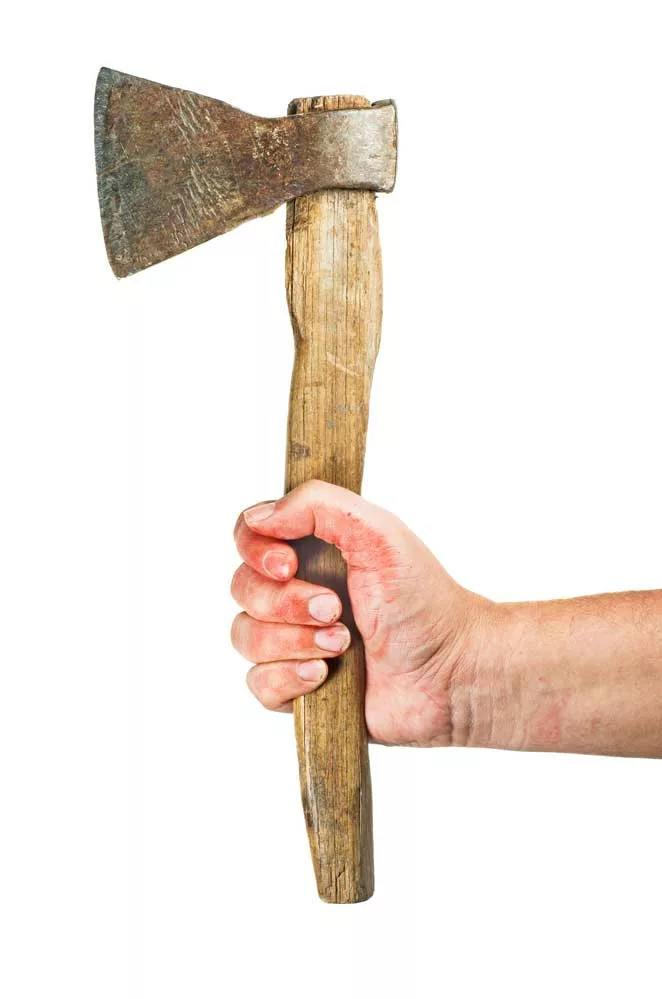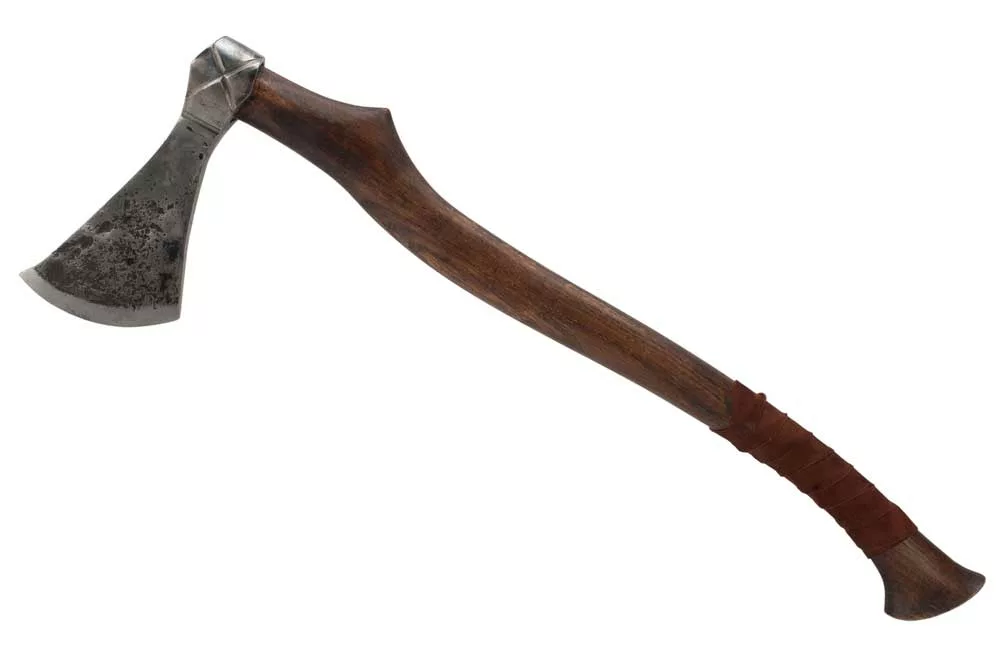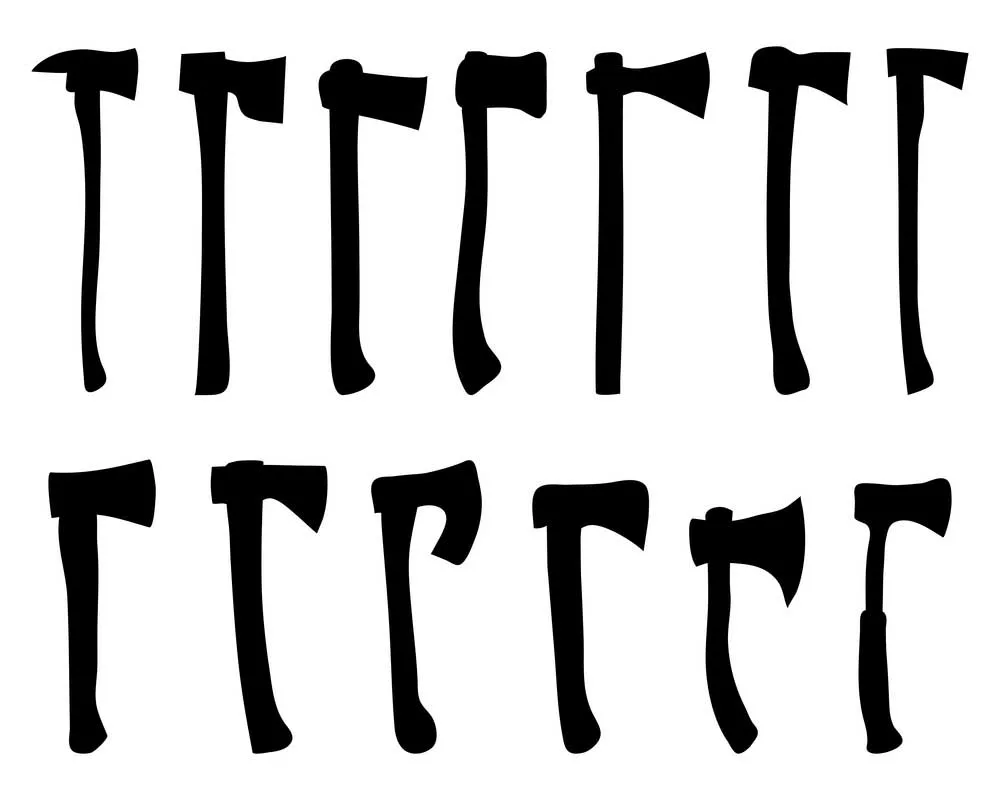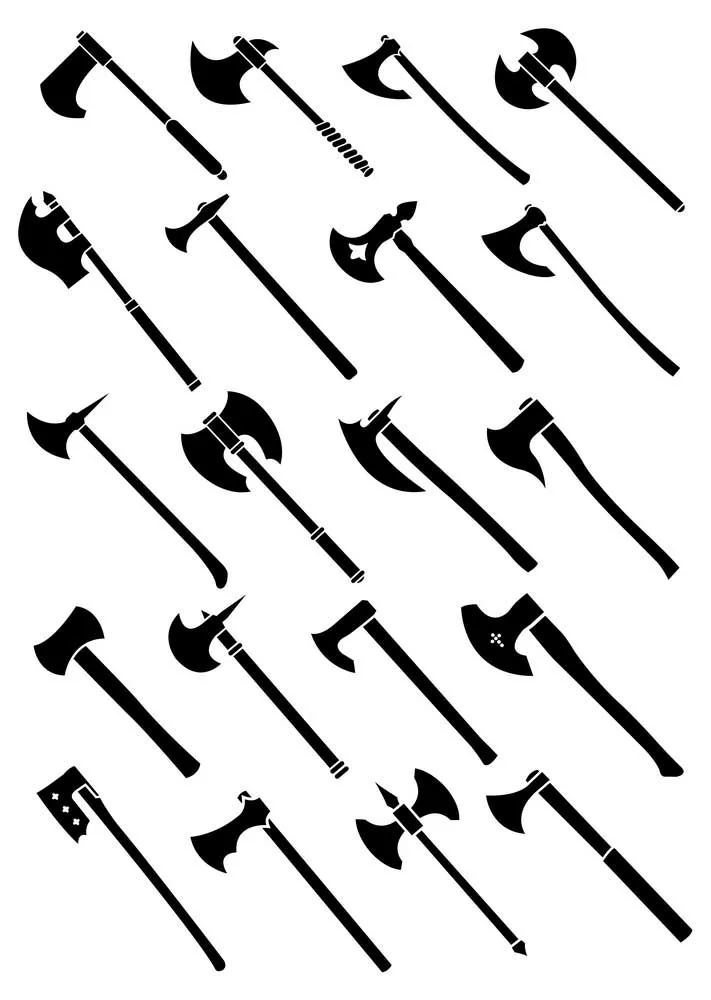Hand axe vs. battle axe, Telling axes apart can be challenging for most people. Different axes carry out different purposes.
Therefore, identifying types of axes is essential in understanding their uses. In this article, we will focus on the hand and battle axes.
We will guide how to tell the differences between the two types of axes.
1. The evolution of axes
Axes have a long evolutionary history in the history of humanity. They evolved as they got adjusted for various uses.
The hand axe
This axe mainly works as a utility tool. The early man originally developed the tool (out of stone) for hunting animals. However, as man evolved, they began using metal alloys in making the axe.
These axes evolved in size and shape, making the axes lighter and, therefore, easier to handle.
Early axes lacked handles. Later, as man evolved to have an opposable thumb for better grip, they developed handles on the axes.
They initially used wood to make the handles. However, modern-day axes have different materials, such as metal and plastic.

(A modern-day hand axe)
The battle axe
As the name would suggest, the battle axe commonly functions as a weapon. It is an adaptation of the hand axe for use in battle.
The battle axe is most commonly associated with the Viking age. However, different civilizations used this axe during wars. These axes had long handles, and people would hold them in hand during combat.
Moreover, they were lighter in weight to enable better swinging during battle.
The shapes varied from country to country. For example, the Roman civilization made crescent-shaped axes used during wars. The battle axes were either single- or double-faced.
Since they are no longer in use in favor of more efficient weapons such as guns, battle axes have been adapted for sports. For example, they are ideal for axe-throwing sports.

(An ancient battle axe)
2. How do the Hand and Battle axes Work?
Hand axe
Commonly used in the chopping of logs and splitting wood during firewood preparation. However, there are different models of the hand axe that vary in weight, blade type, and sharpness. For example, the one for chopping logs is sharper than the one for splitting wood. The blades can either be beveled on both cheeks or have one beveled and one flat. The handles also differ from straight to curved. Check out the difference between an axe and a maul.

(Different shapes of a hand axe)
The battle axe
The battle axe operates as a weapon and in playing sports. It is light in weight to enable ease in swinging during battle. The lightweight can be due to the head having thin cheeks.
The blade is also long and sharper compared to the hand axe. The shape of this axe varies greatly; for example, Roman battle axes are crescent-shaped.

(Different shapes of battle axes)
3. Summary of differences between hand and battle axes
A hand axe is a utility tool, while a battle axe is a weapon. The weight varies; while the hand axe weighs more, the battle axe is lighter.
The blade geometry also varies, with the battle axe having a longer and sharper blade than the hand axe. The hand axe has a wider or curved shaft for better grip. The table below summarizes the differences.
| Hand axe | Battleaxe | |
| Use | As a utility tool | As a weapon |
| Weight | Heavy and weighs more | Light and weighs less |
| Blade geometry | Slightly thicker | Long and sharp blade |
| Handle/haft | The wider or curved gripping end | Straight and even |

(Cut wood with a hand axe)
4. Maintenance of axes
Both the blade and the haft require proper maintenance for durability.
Clean and dry the steel blade properly after each use to prevent moisture from damaging the metal.
Wipe the handle clean.
After use and cleaning, wrap the head of the axe with a piece of cloth for protection.

(A man with an axe)
5. FAQs
Axe vs. sword: which one is a better weapon?
The axe has a better tactical advantage. Due to its lightweight, it is easier to swing. The sharp blade ensures maximum damage.
Therefore, the axe is a better weapon than the sword. However, fighting skills make a significant difference when it comes to weapons.

(Comparative image of a battle axe and a sword)
How heavy is a Viking battle axe?
Just like any other battle axe, the Viking axe is not heavy. It weighs around 1.7 lbs (771 g).
Conclusion
Axes differ in morphology and use. The hand axe is a heavy utility tool, while the battle axe is a lightweight weapon. They have evolved from the Stone age to modern-day use.
